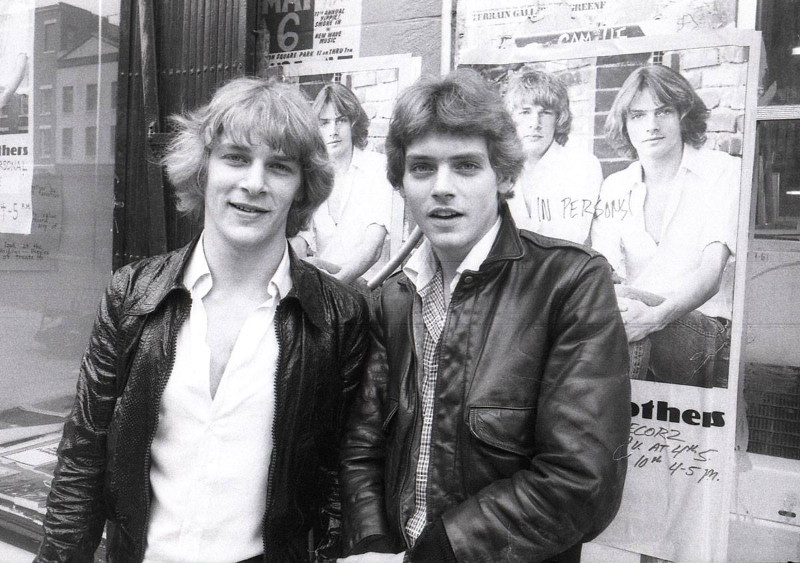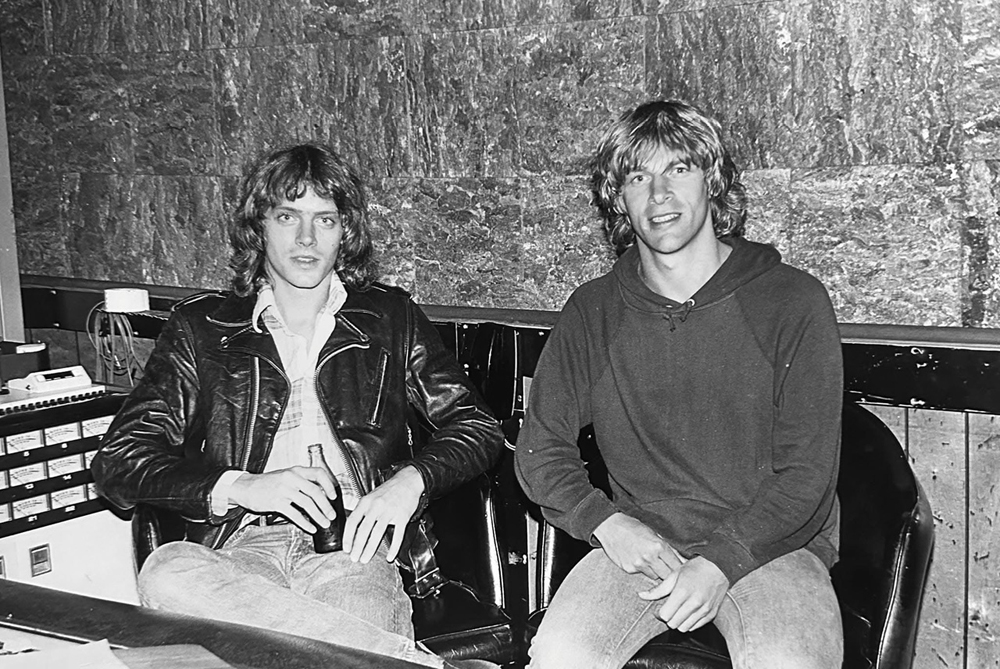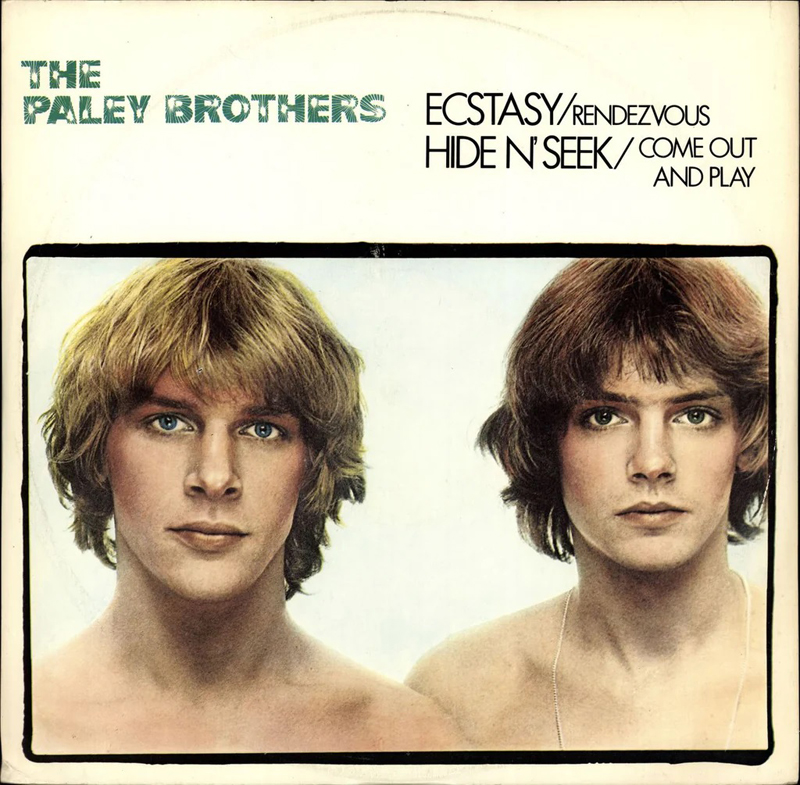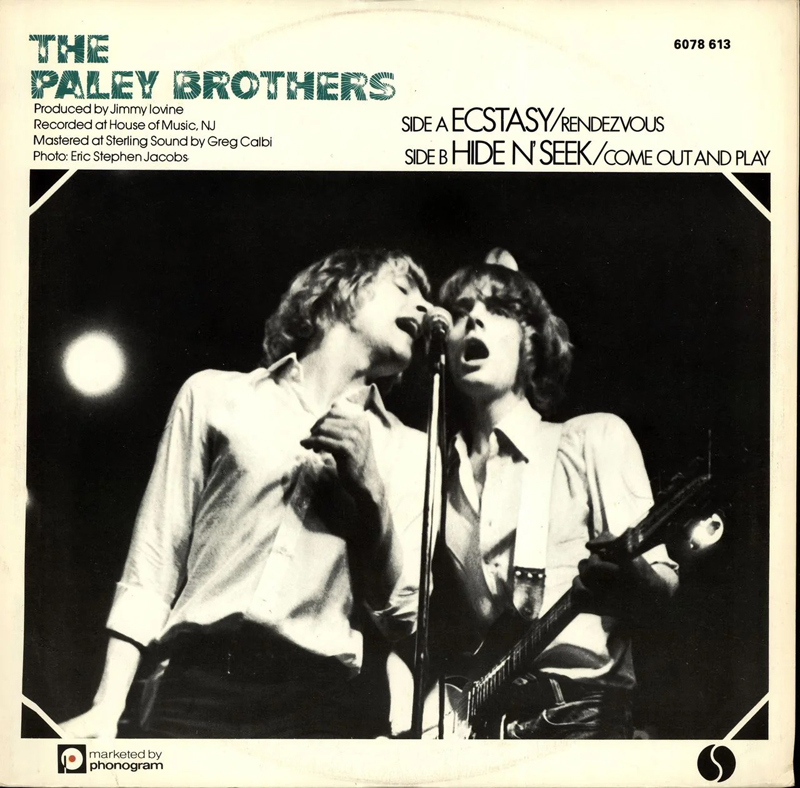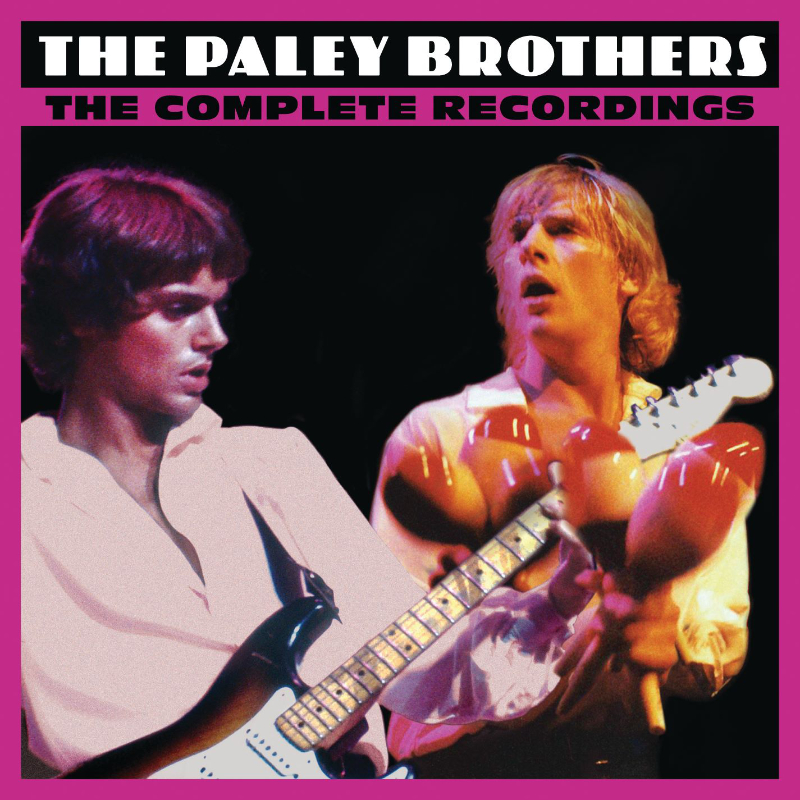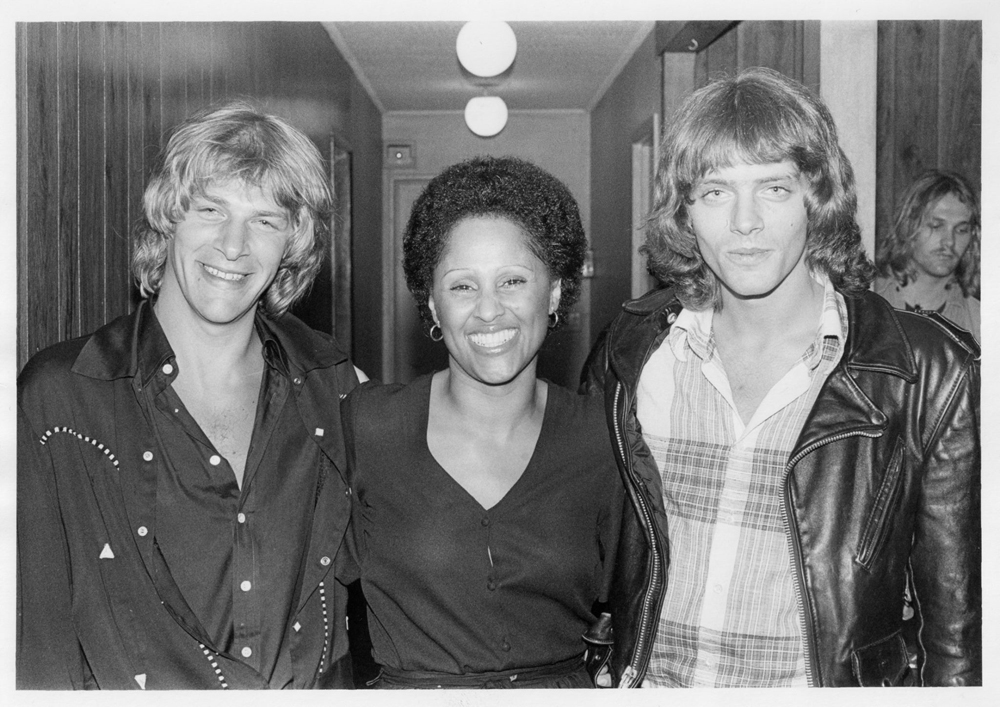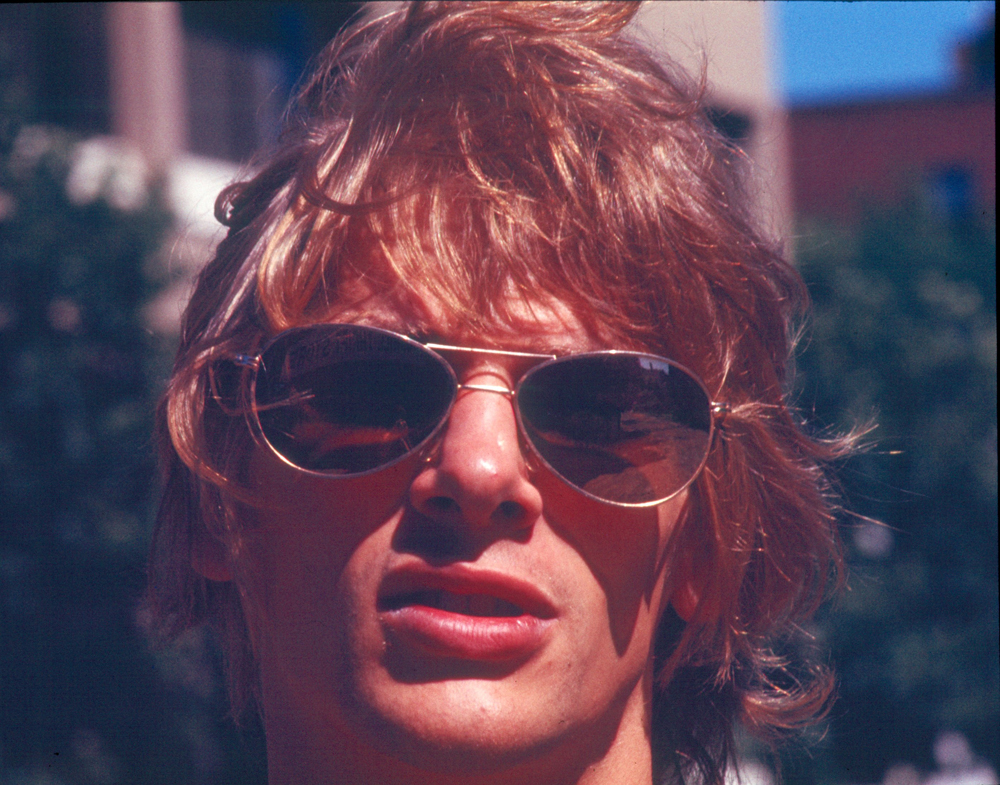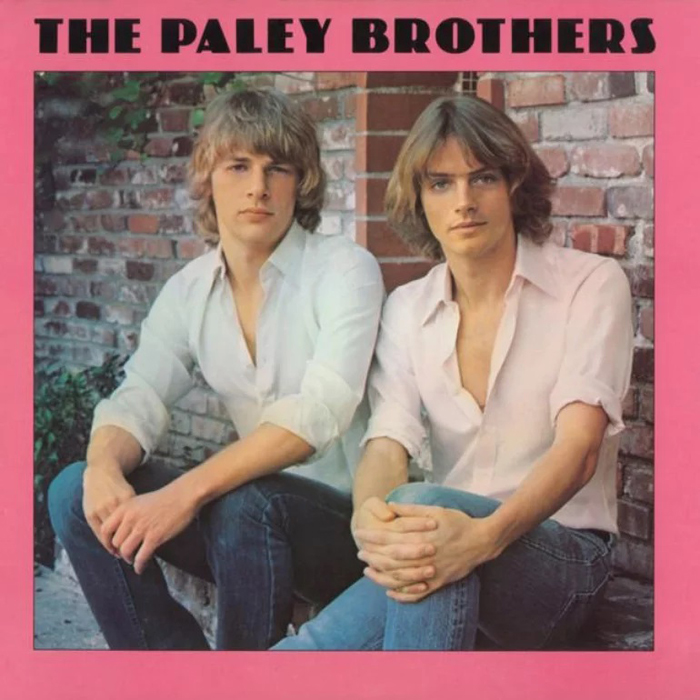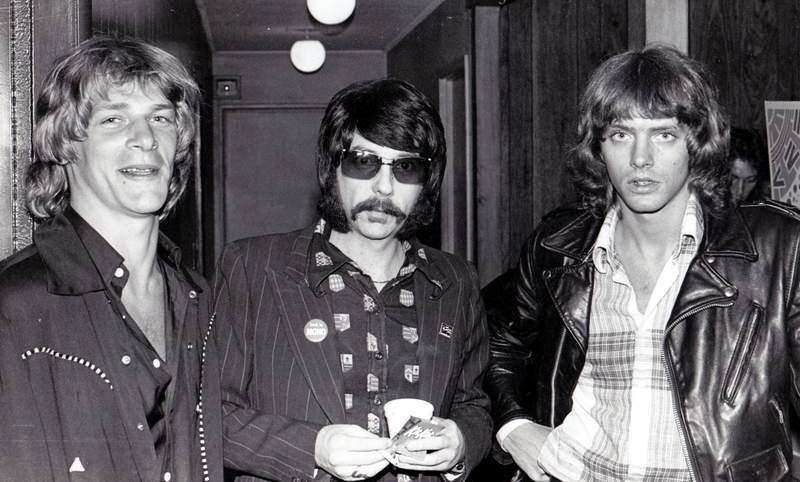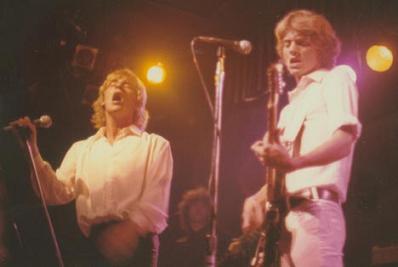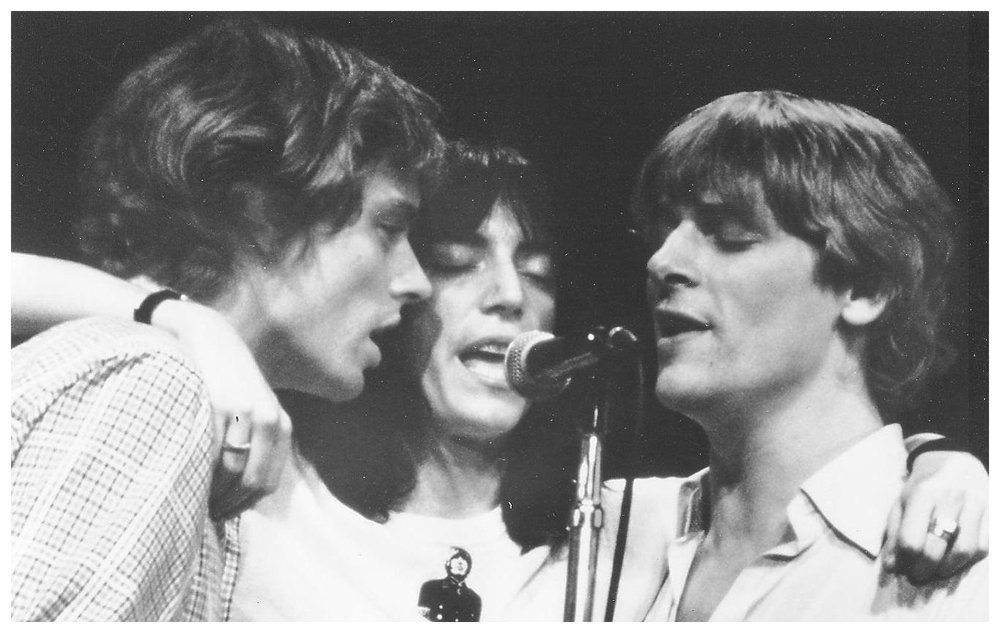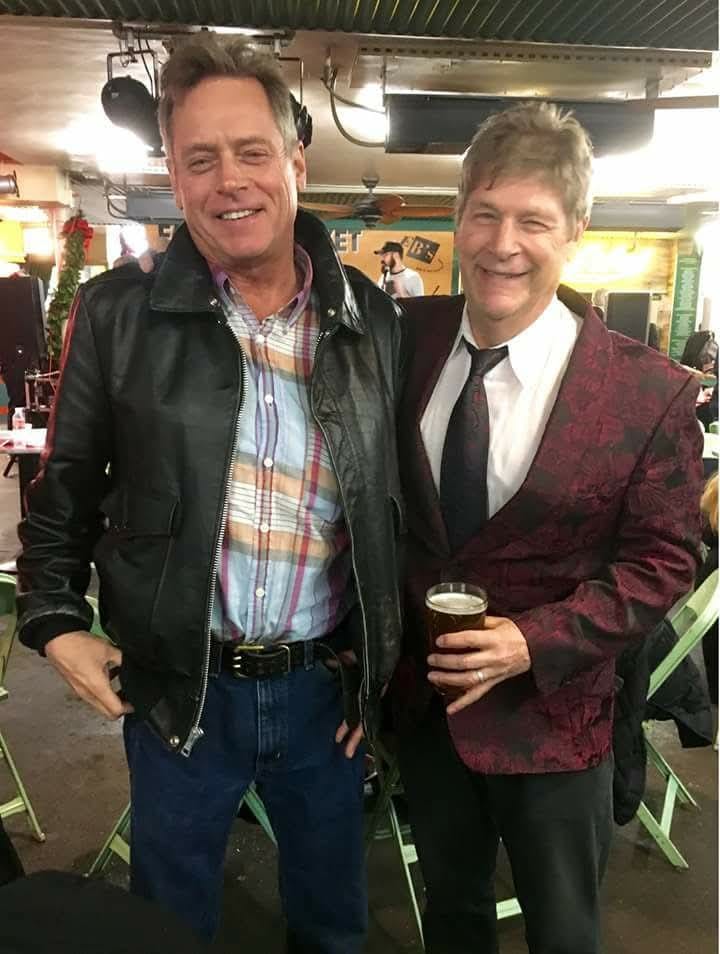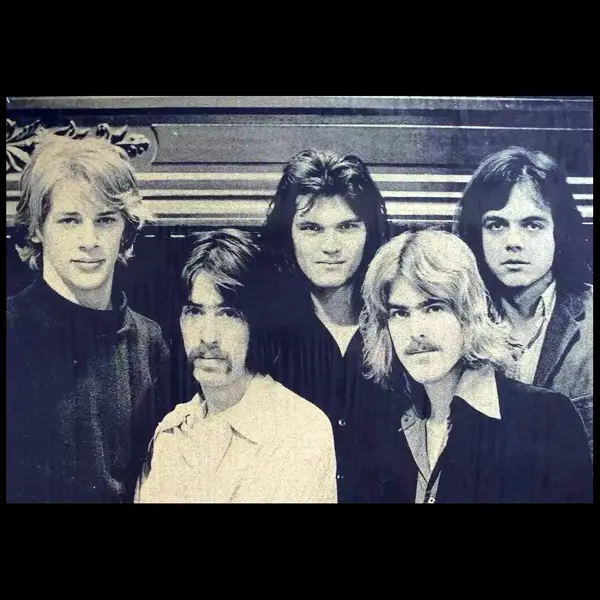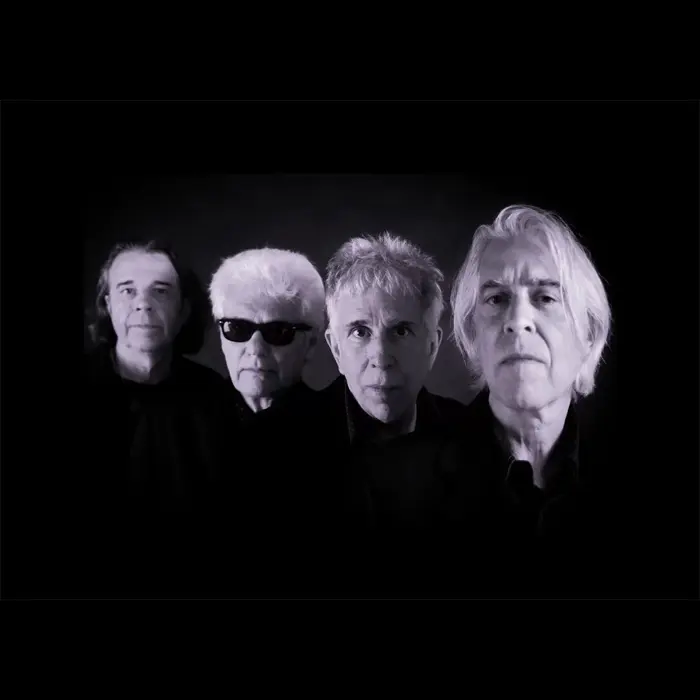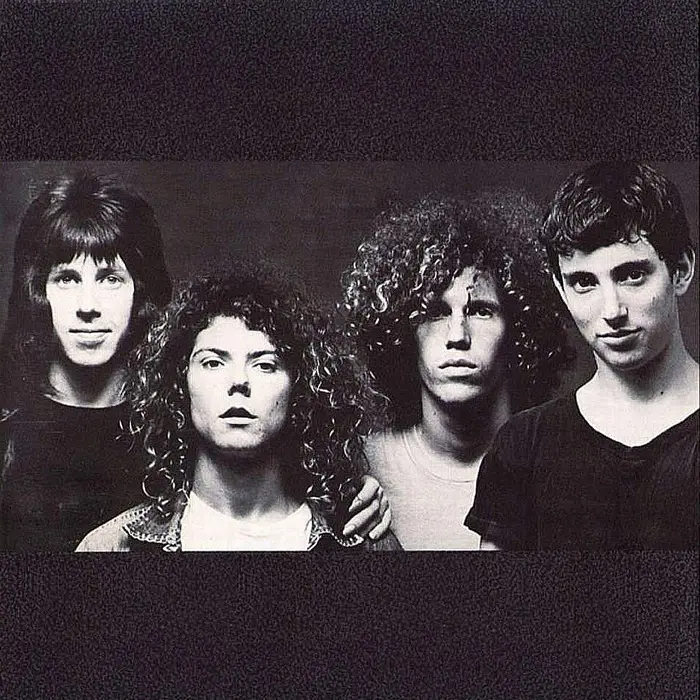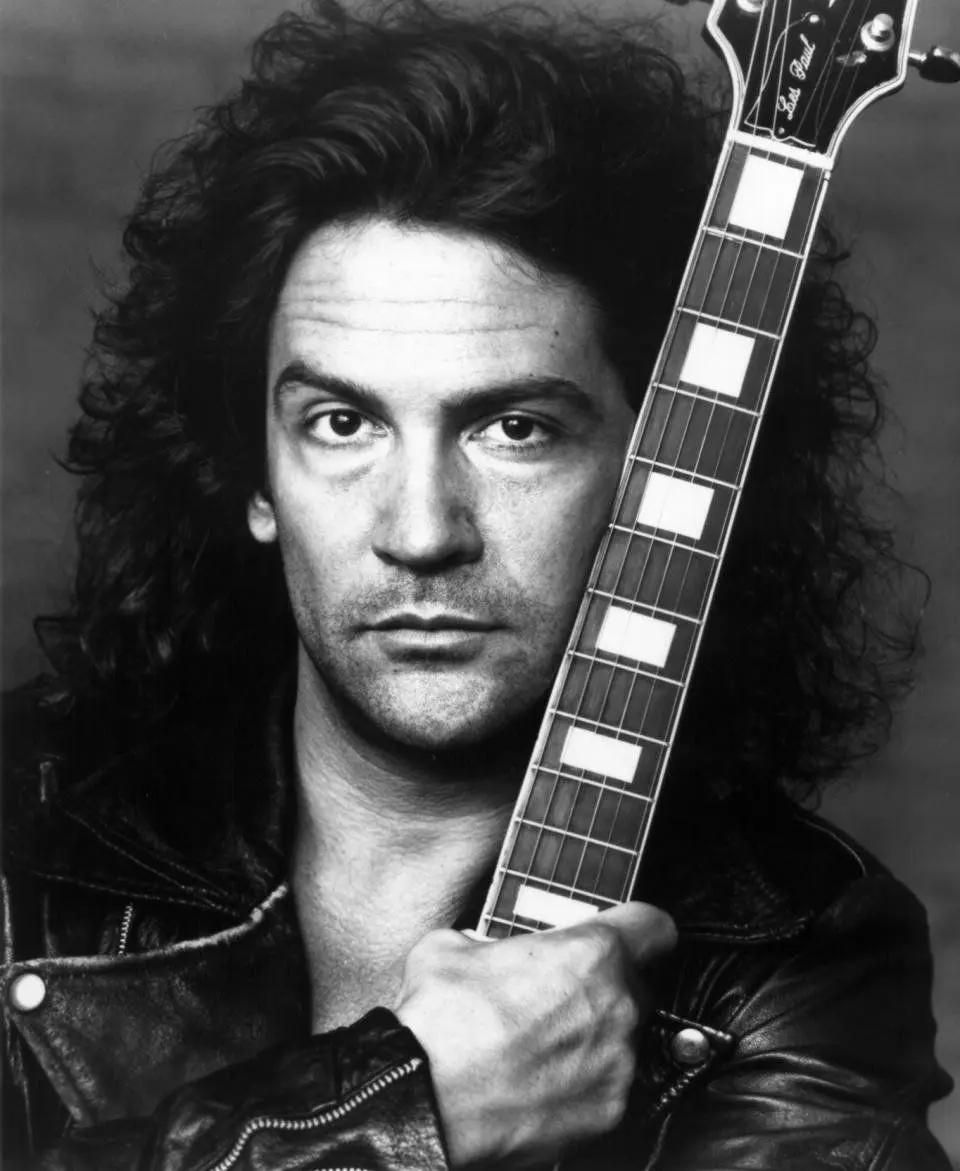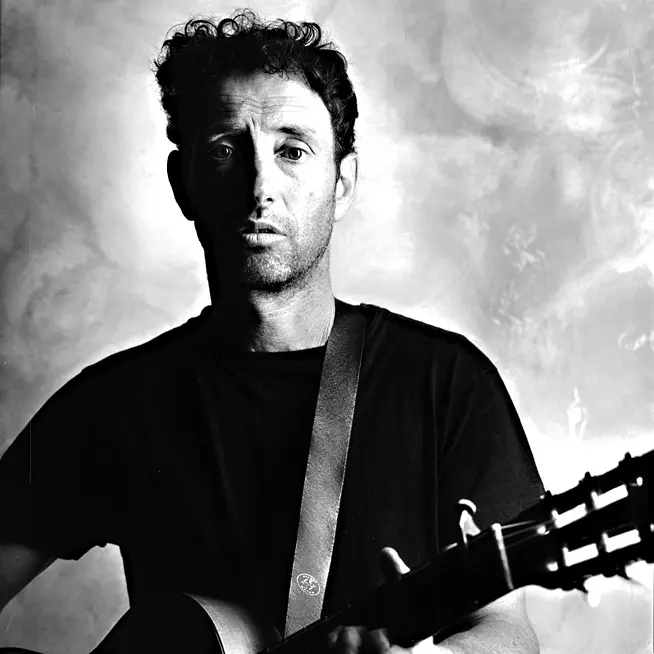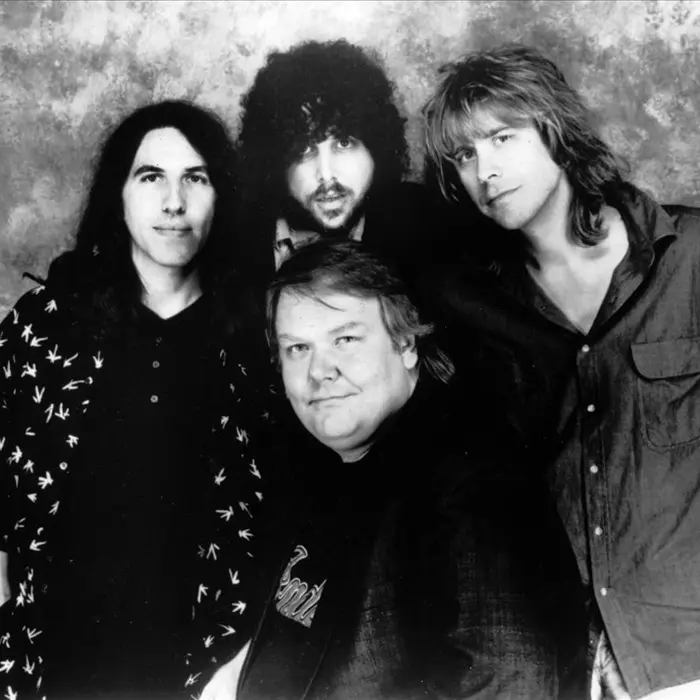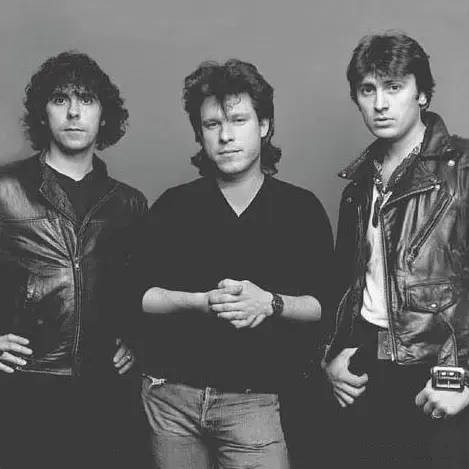The Paley Brothers
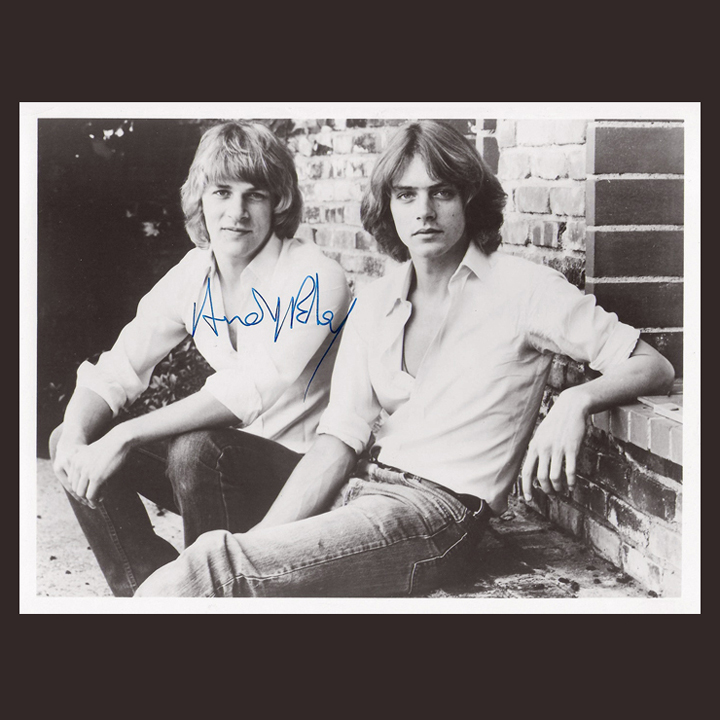
In the mid-to-late 1970s, shock-rock stars like KISS and Alice Cooper were filling stadiums, hair-metal monsters like Dokken and Whitesnake were making their mark and punk progenitors like Black Flag and Dead Kennedys were flipping the proverbial bird at them all. And The Paley Brothers stood light years apart from the era’s rowdy, raucous, raunchy zeitgeist, similar to the way clean-cut family groups like The Osmonds, The Carpenters and The Bee Gees had earlier in the decade.
But in polar opposite of those acts, rather than being persistently plastered in the press as “bubblegum,” “schlock,” “ersatz” and countless other pejoratives, The Paley Brothers became darlings of the underground and were praised as the pinnacle of power pop. Critic Stephen Thomas Erlewine called them “perhaps the greatest example of a band that, by nearly every measure, should’ve been stars.”
Despite their sole album’s utter lack of commercial success – and the fair-skinned, blonde-haired brothers being marketed in heartthrob-heavy teeny-bopper magazines like 16 and Tiger Beat – their rock-and-roll roots and creative credibility remained intact, leaving a legacy that the more saccharine-sweet, fructose-fueled, candy-coated acts of the day might view with bitter envy.
MUSICAL BEGINNINGS
Brothers Andy (b. 1952) and Jonathan (b. 1954) Paley were raised in Crescent, New York, a hamlet within the town of Halfmoon (roughly 16 miles from Albany), and embarked on their musical paths while in elementary school. Andy starting to play drums at age six and Jonathan – inspired by Ricky Nelson on the TV show The Adventures of Ozzie and Harriet – picked up the guitar around age eight.
Andy was 11 when he joined his first band, The Satellite Six, then played in several others before moving to Boston in the early ‘70s and co-founding Catfish Black with two future members of The Modern Lovers, Jerry Harrison and Ernie Brooks, before they became The Sidewinders (with rhythm guitarist Billy Squier joining later). After that band split, he played on Elliot Murphy’s 1975 album Night Lights and performed with Jonathan Richman.
The younger Paley brother joined his first group, Diggit and The DooWops, at age 14 on bass and co-founded the New York City-based Mong in 1975 as lead guitarist. The band covered mostly songs by Elvis, The Beach Boys and The Sidewinders while opening for Television and several other pioneering punk acts at CBGB before relocating to Boston in 1977.
DUO FORMATION, SIRE SIGNING, EP
The idea of forming a duo originated in 1973 while the brothers – both fans of ‘60s groups like the Ronettes, the Shirelles and the Crystals and the practically peerless harmonizing of The Beach Boys – were driving across the US to Los Angeles. After singing together along the way, often with the radio off, the concept seemed worth a shot and they made their first demos and live appearances in Boston in 1974.
In 1975, the Paleys began performing more regularly in Boston and New York while recording additional demos and sending them to labels including Columbia, RCA, Elektra and Atlantic before signing with Sire Records in 1976.
The initial result was an EP of four Andy-penned originals released that year: the Ronettes/Beach Boys-tinged “Rendezvous,” the Rascals-ish R&B track “Hide and Seek,” the tightly harmonized, guitar-wailing “Ecstasy” and the full-on sunshine popper “Come Out and Play.” The disc was produced by Jimmy Iovine – the first production credit of his illustrious career – in New Jersey studio and hailed by one critic as “one of power pop’s finest moments.”
DEBUT ALBUM
In 1977, Sire released the duo’s eponymous LP, recorded that year at The Beach Boys’ Brother Studios in LA (except for “Come Out and Play,” taken from the EP). It featured Andy on keyboards/harmonica/vocals, Jonathan on guitar/vocals, former Sidewinders Eric Rose (guitar) and Leigh Foxx (bass), plus Yellowjackets co-founder Jimmy Haslip on bass and future Alice Cooper drummer Jan Uvena. The album failed to chart in the US or UK (but created some street-level buzz in the latter) and the Paleys supported it with a tour that included being part of a gig at CBGB in May with Blondie, Suicide, The Voidoids, Dead Boys, The Runaways and Patti Smith Group.
SHAUN CASSIDY TOUR, SGT. PEPPER’S FILM, PHIL SPECTOR SESSIONS
In early 1978, the Paleys hit the road as the opener for pop idol Shaun Cassidy, whose debut album was then at #3 in the Billboard 200. Their backing band included Nervous Eaters‘ Steve Cataldo, Alan Hebditch, Rob Skeen and Jeff Wilkinson. Later that year, they appeared in the movie Sgt. Pepper’s Lonely Hearts Club Band.
In early 1978, “Wall of Sound” producer Phil Spector, impressed by the Paley’s 1976 EP, invited the brothers to record with him in Los Angeles. In mid-1978, they worked on songs with Spector at his home for about a week before recording for several days at Gold Star Studios, backed by the legendary group of session players called the Wrecking Crew (including drummer Hal Blaine, born in Holyoke, Massachusetts). The sole result was the fiendishly infectious “Baby, Let’s Stick Together” (which Spector had cut with Dion three years before) featuring Andy on piano/vocals and Jonathan on acoustic guitar/vocals.
In 2013, Jonathan said that working with the notoriously eccentric and demanding Spector was “fantastic but also very exhausting and ultimately contributed to me wanting to try something other than being a Paley Brother.”
“COME ON LET’S GO,” ROCK AND ROLL HIGH SCHOOL, DISBANDING
In 1979, the Paley’s cover of Richie Valens’ “Come On Let’s Go” (recorded in 1977 with label mates The Ramones) was used in the film Rock and Roll High School before the brothers went their separate ways. After the split, Andy toured with Patti Smith Group and Jonathan Richman & the Modern Lovers, produced several of Richman’s albums (some with the Modern Lovers, others after Richman had gone solo) and sang backup on multiple LPs. He later became a high-profile producer for Brian Wilson, Jerry Lee Lewis, NRBQ and a laundry list of others. Jonathan joined Nervous Eaters, Pink Cadillac, Classic Ruins and The Reflectors before spending four years working on sailboats in the Pacific and Indian Oceans. After that, he moved into acting and modeling, became an EMT/ER tech in 2002 and graduated from nursing school in 2010.
REUNIONS, COME OUT AND PLAY, THE COMPLETE RECORDINGS
The pair have worked together several times since nixing their musical partnership: In 1979, both played in sessions for Nervous Eaters’ debut album (released in 1980 by Elektra) and in 1990 Jonathan contributed songs to the Andy-produced soundtrack for the film Dick Tracy. He also played guitar on a Little Richard track (“Elevator Operator”) that Andy produced for the 1991 film Rage in Harlem, bass on the Jerry Lee Lewis record Andy produced in 1995 (Young Blood) and bass on some of Andy’s work with Brian Wilson.
In 1993, the Paleys’ “Come Out and Play” was included on the Rhino Records compilation D.I.Y.: Come Out and Play: American Power Pop (1975-1978). In 2013, Real Gone Music released The Paley Brothers: The Complete Recordings, a 26-track collection of 15 previously released songs from 1977 and 11 previously unreleased ones from 1978/79 that would likely have appeared on their unrealized second album.
COMMENTS ON DISTINCTIVE SOUND
Asked in 2013 how they landed on their distinctive “Paley Brothers” sound, both attributed it to their earliest music diet, meaning AM radio. “You know, my background is really listening to just AM radio in upstate New York, so I was a pop guy to begin with [and] that’s really what made me want to make the kind of music we made,” Andy said. “The records I heard when I was a kid blew my mind [and] absolutely convinced me to want to do this. And I’ve never stopped doing it. I’m still into this kind of music!”
“Yeah, when we were kids, AM radio was different than radio is now,” Jonathan added. “It wasn’t just one single type of music that you’d hear on a station. They covered everything. That was part of it, for sure.”
Andy Paley died in November 2024 at age 73 while in hospice care in Colchester, Vermont. His death was announced by Bob Merlis, a representative for Paley’s band (Tom Kenny & The Hi-Seas), who said the cause was cancer. In an obituary published in Variety magazine, The Beach Boys’ Brian Wilson described Paley as “the most frighteningly talented person that I’ve met and the greatest musical genius I’ve come across in many years…maybe my whole life.”
(by D.S. Monahan)

